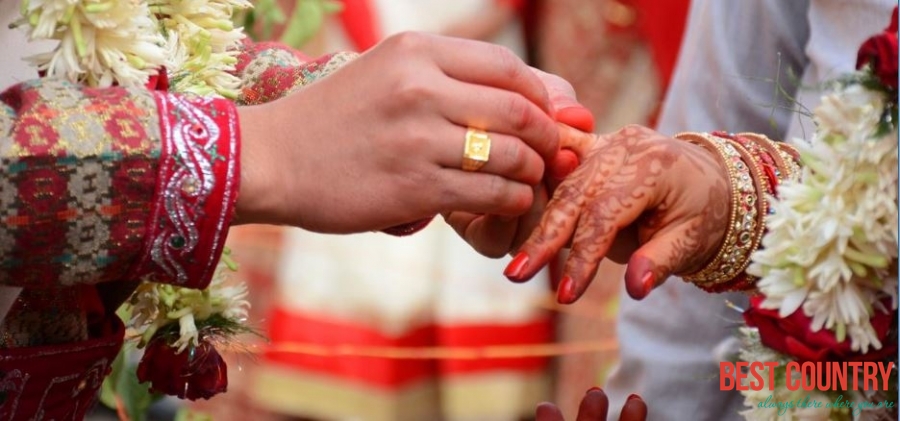Wedding customs in Nepal vary according to ethnic groups and castes. Traditionally Nepalese marriages are arranged, a deal between two sets of parent. In some cases the boy and his family will come to visit the girl and her family where they strike a deal.
Wedding Customs of Nepal
If they cannot agree then the boy's family will seek another girl for him to marry. However, in the modern age, this particular custom seems to be practiced less often.Wedding celebrations in Nepal mean great festivity with feasting and music. Nepalese wedding customs are very elaborate and the wedding may take up to 3 days.
 Many marriage customs in Nepal are strongly based upon Buddhist and Hindu traditions. In the past child marriage along with polygamy was widely accepted and preferred.
Many marriage customs in Nepal are strongly based upon Buddhist and Hindu traditions. In the past child marriage along with polygamy was widely accepted and preferred.
This attitude has changed especially with the instituting of governmental laws which state that girls have to be 18 before marriage is permissible. Divorce rates are low in Nepal as marriage is considered as a sacred and divine institution.
Let us consider the marriage and wedding customs of Nepal's Newar people. Traditionally the marriage arrangement in the Newar community is monogamous (only one partner) and patrilocal (the women lives with the husband's kin). As with other people in Nepal, the marriages are arranged. Interestingly, elopement is commonly practiced.
Marriage customs do not permit Newars of the same decent to marry. Marriage mates must be of the same caste and grade. A rule of 'seven generations' descent is followed in certain areas. Newar marriage involves numerous formalities completed in phases.
The father of a boy will find a suitable bride and consults an astrologer to find out if they are a good match. Negotiations take place through an appointed mediator between the two families. After the horoscope determines they are suited, the boy's family will present the other family with food, nuts, fruit and sweets.
The day before the wedding a ceremony called duradai takes place. A pathi (milk with molasses and cardamom) is delivered at the girl's house to repay the mother for the years she spent suckling her daughter. The next evening a feast is held at the girl's house where gifts are brought.
At the same time a procession takes place at the boy's home. A large crowd joins in the eating and having a good time. The later proceed to the girl's home with a band leading the way, the groom is left behind.
They celebrate together and then return home except the groom's father and some relatives. Past midnight they carry the girl in a hammock to a friend of the groom's father. The following morning the beautiful bride arrives at the boy's house.
The boy's mother will bathe the girl's feet in holy water, presenting her with a key. Inside the house a priest engages the party in religious ritual. After this the bride must give areca nuts to everyone in the family. At the end of the day the groom and his bride will share a meal from the same plate. A large feast takes place in the evening.
The next day the bride is given a formal reception into the kitchen where everyone eats together. On the third day she is taken to the deity the family worships and takes part in various religious rituals with the groom.
They then return to the bride's house for observances of respect. The newly married couple return to the groom's home to begin their married life.